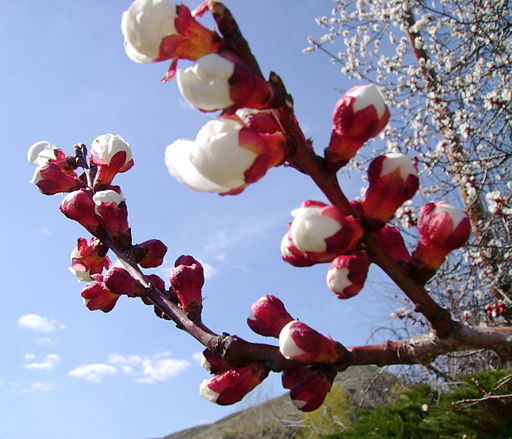Chemical agent helps thin stone fruit
Chemicals are used to thin out stone fruit – rather than doing it by hand or machine – under an invention from the UK’s Fine Agrochemicals Ltd.
In a patent application document, the company says the need for fruit load control is widely recognised in the stone fruit sector. As the fruit carrying capacity of trees is limited, an increase in the number of fruit – such as in the case of apricots, nectarines, plums, cherries and peaches – is accompanied by reduction in fruit size.
And since small fruit is considered “low quality fruit” in the fresh fruit market, and attracts “very low prices”, it is common practice among fruit growers to reduce the number of fruits per tree by chemical, mechanical and/or hand thinning in order to prevent branch breakage, and to obtain large, high quality fruits, and also because abundant bearing may cause bi-annual bearing, which is disadvantageous in itself, it said.
But the hand thinning of flowers or of fruit require a lot of manpower and is “very expensive”, the company said in the documents published by the World Intellectual Property Organization (WIPO). And mechanical flower thinning has downsides including the risk of tree damage.

As for the less labour intensive option of chemical thinning, the company said “very few” products are available for stone fruit and only treatment with GA3 (gibberellic acid) is relatively common.
Instead, it proposes use of gibberellin 7 (GA7) for thinning of stone fruit by applying the GA7 as foliar spray within 12 weeks after full bloom, and preferably using the GA7 mixed with GA4.
Suitable stone fruit include peach, apricot, nectarine, plum, cherry and mirabelle but the preferred species are peach and nectarine.
Tests show that with suitable application of GA7, at least a 30% reduction (between 10-70%) in fruit set is achievable, it said.
Images:
1: Nectarine branch by Christopher Thomas (Own work) [CC BY-SA 2.5 (http://creativecommons.org/licenses/by-sa/2.5)], via Wikimedia Commons
2: Harrow Beauty peaches at Lyman Orchards by Sage Ross (Own work) [CC BY-SA 3.0 (http://creativecommons.org/licenses/by-sa/3.0) or GFDL (http://www.gnu.org/copyleft/fdl.html)], via Wikimedia Commons


